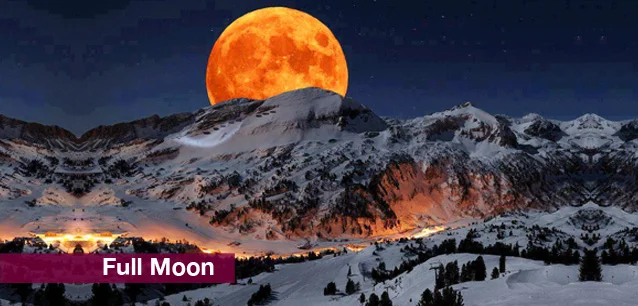 AD
AD
Today is: November 22
Scroll to explore events active on this date.
LEEP INK FEATURES

August? Absolutely!
In August, we live through the Dog Days of Summer. It's hot and often humid, and those who can leave for better climates do. Down south, winter is in full force. August is also known as "the ...

In The Heat of July: July 2025 Events
Is it hot enough (or cold enough if you're below the equator) for you yet? There is actually a day for that! Like every month, I pick a diverse collection of events you may or may not know about. This ...

May Blooms: Events in May 2025
Along with October, May is one of the most densely packed months of the year. It's before the summer humidity and the last whole month of the school year. The weather is warming in t...
About the February Full Moon
Moon
Ends: Feb 24, 2024
DESCRIPTION:
A full moon occurs when the moon is illuminated by the sun and on the opposite side of the earth. Its ecliptic longitude is 180 degrees.
For centuries, people have applied names to full moons to track the seasons and as a point of reference. The names listed below come from Native American and Colonial American traditions passed down through generations. Here are the common names for full moons in each month in the Northern Hemisphere (the Southern Hemisphere doesn't do this tradition):
January: Wolf Moon—Named after the howling of wolves during the cold winter nights.
February: Snow Moon—Named for the typically heavy snowfall.
March: Worm Moon—As the ground thaws, earthworms emerge, attracting birds.
April: Seed Moon—Time to plant for the fall harvest.
May: Flower Moon—Named for the abundance of flowers in May.
June: Strawberry Moon— due to the short harvesting season for strawberries in the northeastern United States.
July: Buck Moon—when new antlers grow on male deer (bucks).
August: Sturgeon Moon—when sturgeon fish are abundant in North America's Great Lakes.
September: Harvest Moon—time to harvest crops.
October: Hunter's Moon—game is at its fattest, allowing hunters to stock up for the winter months.
November: Beaver Moon—when beavers build their winter dams.
December: Cold Moon—long, dark, and cold nights.
Full moon names vary between cultures, regions, and traditions; several full moons have alternative names. The above are the most common.
A blue moon occurs when two full moons are in a single month, and February is the only month in the year that occasionally does not have a full moon. A blood moon describes a total lunar eclipse.
VIDEOS
Currently, this event does not have supporting videos.
SUPPORTING DOCUMENTS
Currently, this event does not have supporting documents.
ADDITIONAL IMAGES
Currently, this event does not have supporting images.
Where would you like to go now?
 AD
AD


/footer-logo.svg)
